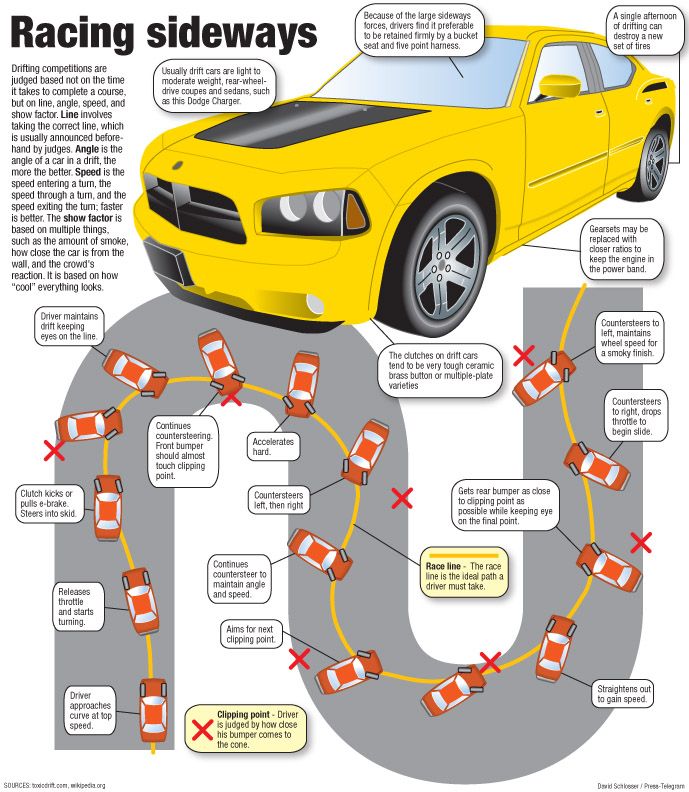Home>Sports>NASCAR>NASCAR Cars
PreviousNext
For the Daytona 500, NASCAR teams are allowed up to eight sets of tires for practice and qualifying and an additional seven sets (one set carries over from practice) for the race itself. In total, 15 sets of tires are allowed, or 60 individual tires. The number of tires used in the race will vary depending on the driver, team, track configuration, and race length, but between 20 and 28 tires are typically used for the Daytona 500 race. More aggressive drivers who take tighter or sharper turns, or lose control and spin out, will use more tires in a race.
Held at the beginning of each NASCAR season, the Daytona 500 is regarded as the most important race in the NASCAR Cup Series. Unlike other sports where the finale is the championship at the end of the season, the Daytona 500 kicks off the yearly series with a wave of excitement. The race lasts for 500 miles and is run at the Daytona International Speedway in Florida every year.
Before Goodyear became the exclusive tire supplier of NASCAR in 1997, two other manufacturers were also producing tires for the sport. The Firestone Tire and Rubber Company and the McCreary Tire and Rubber Company were Goodyear’s primary competitors in the beginning. After Goodyear rose above its early competition, its toughest battle came against Hoosier. At one point, NASCAR believed Goodyear would be the victim of a hostile takeover (affecting NASCAR’s operations) and hired Hoosier as a backup for Goodyear. After drivers raised safety concerns about Hoosier tires, Goodyear was adopted as the sole tire supplier for NASCAR.
Prior to the 2017 NASCAR season, at the Daytona 500, teams were allowed to have up to nine sets of tires on the race day. Before the season started, NASCAR announced that it would limit the number of tire sets teams could have in some of their events, including
the reduction to eight tire sets at the Daytona 500. This decrease means that crew chiefs have to manage their tires more strictly and call for fewer tire changes.
Before the season started, NASCAR announced that it would limit the number of tire sets teams could have in some of their events, including
the reduction to eight tire sets at the Daytona 500. This decrease means that crew chiefs have to manage their tires more strictly and call for fewer tire changes.
The tires used by NASCAR are designed to handle high racing speeds, and each tire can only last for about 100 miles of racing. The tires are designed to have as much grip as possible, especially when the rubber heats up to increase the traction and control for the driver. Since the tires do not last for that long, and how many tires each team can have, the cost of the tires becomes very expensive. In 2015 for the NASCAR Cup Series, $35 million was spent on tires. Each tire costs around $500, and each team goes through $20,000 worth of tires for every race.
Goodyear is the current manufacturer of NASCAR tires and offers slicks for dry conditions and rain tires for wet weather racing.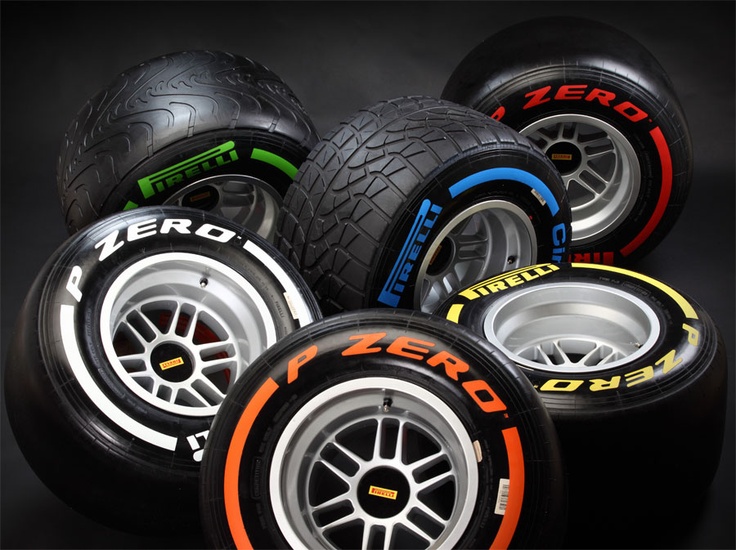
All NASCAR tires are currently manufactured by Goodyear, which is based in the United States and produces for all types of vehicles. At the Daytona 500, NASCAR Cup Series cars run 18-inch Goodyear Eagle Superspeedway Radials. The minimum recommended inflation is 28 PSI in both left tires, 52 PSI in the right front, and 50 PSI in the right rear. The circumference of the left side tires is 89.53 inches; the right sides are slightly larger at 89.76 inches around.
The number of sets of tires allowed in a NASCAR Cup Series race is different at each track. At the Daytona 500, teams are allowed to use eight sets of tires during the race. There is also a limit on the number of tires a team can use throughout the whole weekend. At the Daytona 500, teams are allowed to use 15 total sets the entire weekend; seven for practice and qualifying and eight during the race.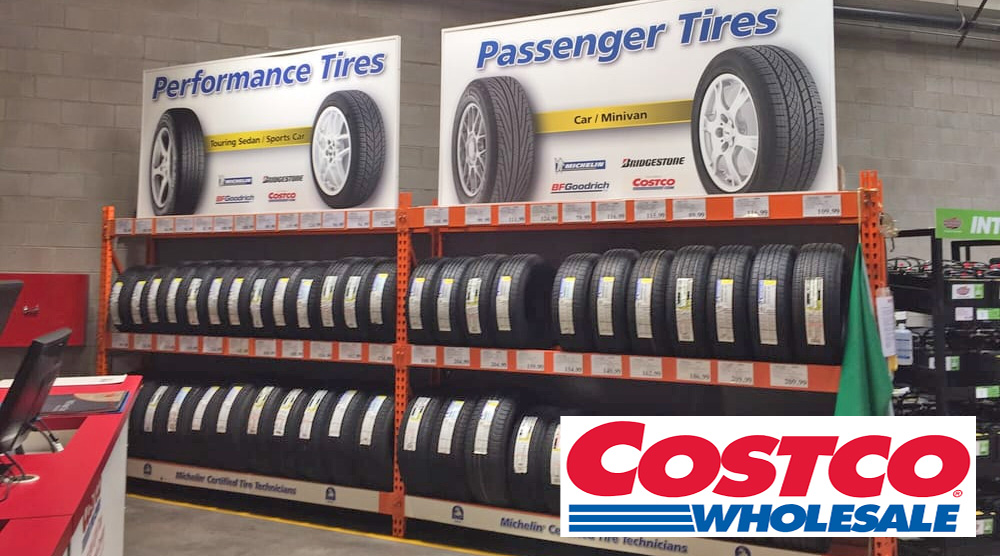
A single NASCAR Cup Series tire costs around $500, meaning that a set of four tires is $2,000. NASCAR Cup Series drivers go through up to 12 sets of tires per race, meaning that an entire race could cost a NASCAR team over $20,000 in tires.
A NASCAR Cup Series tire weighs 24 pounds. The aluminum alloy wheels used on the Generation 7 cars are extremely lightweight, at only three pounds apiece. The combined weight of rim and tire is 27 pounds per wheel.
PreviousNext
PreviousNext
In the long list of costs that are involved in running a NASCAR car and team, one of the standout figures comes from the tires.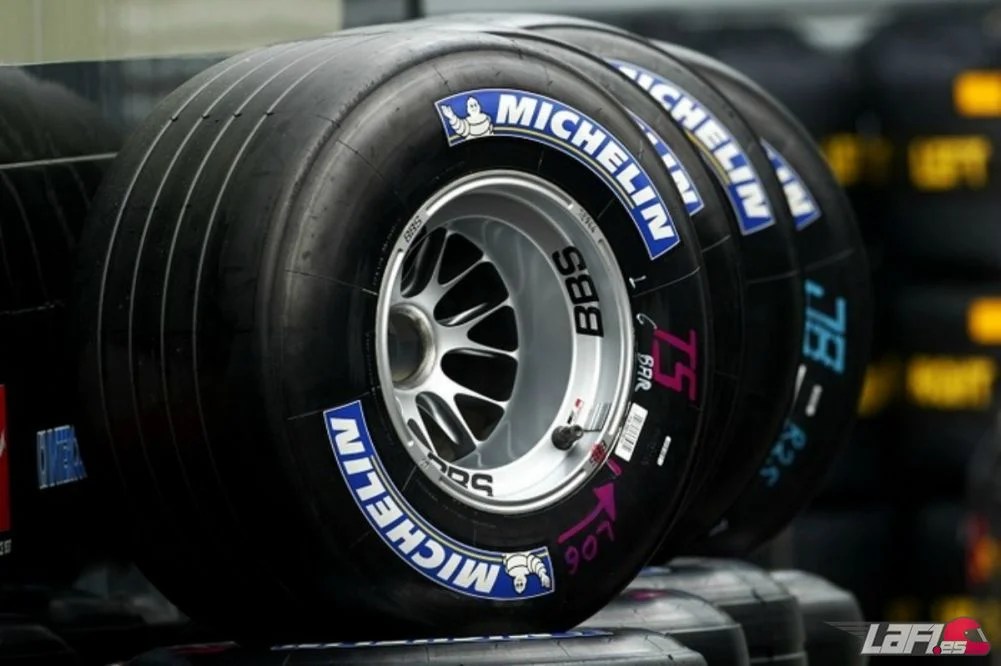 NASCAR teams all make use of the same type of tire, which is all part of the “stock car” racing experience. The official supplier of tires right now at the time of writing is Goodyear.
NASCAR teams all make use of the same type of tire, which is all part of the “stock car” racing experience. The official supplier of tires right now at the time of writing is Goodyear.
NASCAR tires can cost 350 to 500 dollars per tire. However, they are custom made for the tracks and cars and optimized for performance. Where the real expense comes from is the potential number of tires that could be used in a race. Up to 16 sets per team could amount to more than 25,000 dollars per race.
How much do NASCAR tires cost? Per race? Per season? The numbers might surprise you, but at any rate you’ll find it interesting just how much these round rubber contraptions cost teams, and just how many are used during the course of a race and a season. These ideas and more are what we’re exploring in this article.
It’s everything you wanted to know about NASCAR tire expense!
We mentioned above that Goodyear is the sole supplier of NASCAR tires, but why is that? Wouldn’t it be more interesting to allow a bit of market force to take place? Goodyear is no stranger to the world of NASCAR.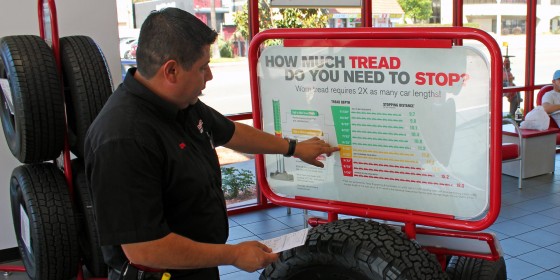
The two have had an association going back to 1969, but it was in 1997 that NASCAR and Goodyear signed their contract that allowed the latter to become sole supplier for the main NASCAR series. It has helped the Goodyear plant in Akron, Ohio go into overdrive, producing up to 100,000 tires per year just for NASCAR.
The tires themselves are Goodyear Eagle Radical Race tires. For the 6th-generation vehicles launched in 2022, these tires feature 18-inch bead diameter tips, as well as additional tread compounds to improve traction, and no inner liners. Before 2022, the tires had always been 15-inch models.
Each tire costs the team anywhere from $350 to $500, making a full set from $1,400 to $2,000 in total. When you remember that there could be as many as 10 pit stops during a race, sometimes even more, and teams are given up to 16 sets of tires per race, then the total budget per-race budget for tires is about $20,000.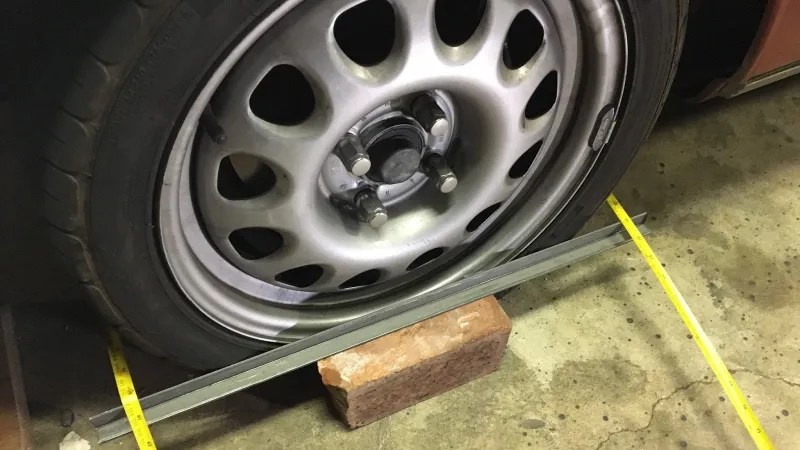
It does vary from race to race, of course, but that tends to be what it works out at on average, and that’s what the top teams budget for each race.
The per-race number for investment on tires seems excessive, but the fact is that these tires are hand-crafted in Goodyear’s Akron, Ohio plant, and are thus not in the same league as ordinary tires that are mass produced for passenger cars.
The level of engineering that goes into producing a track-friendly tire is far greater, with high speeds, sudden maneuvers and more to factor into the mix. The cost of $350-500 per tire actually doesn’t seem so high when you really think about it, but the number is simply driven higher because of the sheer number of tires that are needed to keep cars safe on the track. Each one only lasts for about 100 miles, assuming that nothing else goes wrong on the day.
Even the amount of money spent on tires for one car in a single race can be enough to make some people’s eyes water, but it’s really when you see the costs over a full season that they start to properly sink in.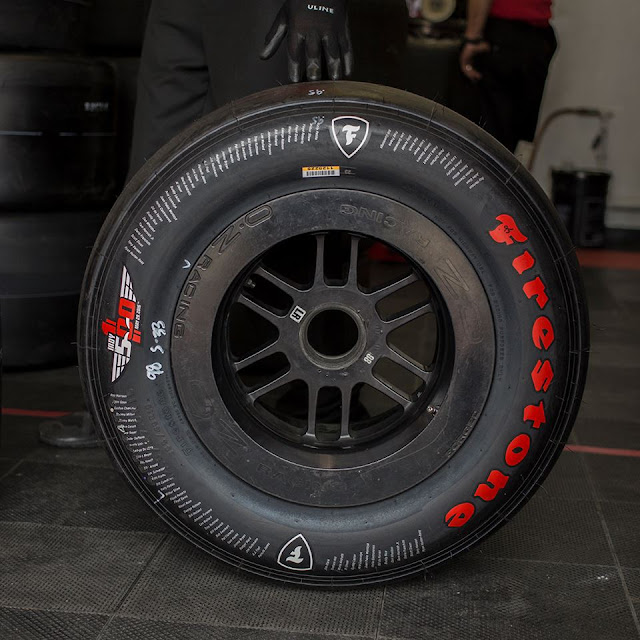 With a budget of $20,000 per race, and 36 races in the seasons, teams need to ensure they have at least $720,000 per season, give or take some contingency money for if and when things go wrong on race day.
With a budget of $20,000 per race, and 36 races in the seasons, teams need to ensure they have at least $720,000 per season, give or take some contingency money for if and when things go wrong on race day.
Each team is allowed up to 16 sets of tires per race, not all of which may be used, but those tires still come into the teams budgets if they’re used in the lineup. Let’s say a team uses its full allotment over the course of a 36-race season, that comes to a total of 64 tires per race, or 2,304 tires for the season. Now take that number and multiply it across all the different teams and drivers, and you end up with about 100,000 tires per year.
One word has been interestingly absent from our tire story so far, and that’s “buy” or any of its synonyms such as purchase or procure. This is because technically the NASCAR teams are not buying their tires from Goodyear at all, but rather leasing them.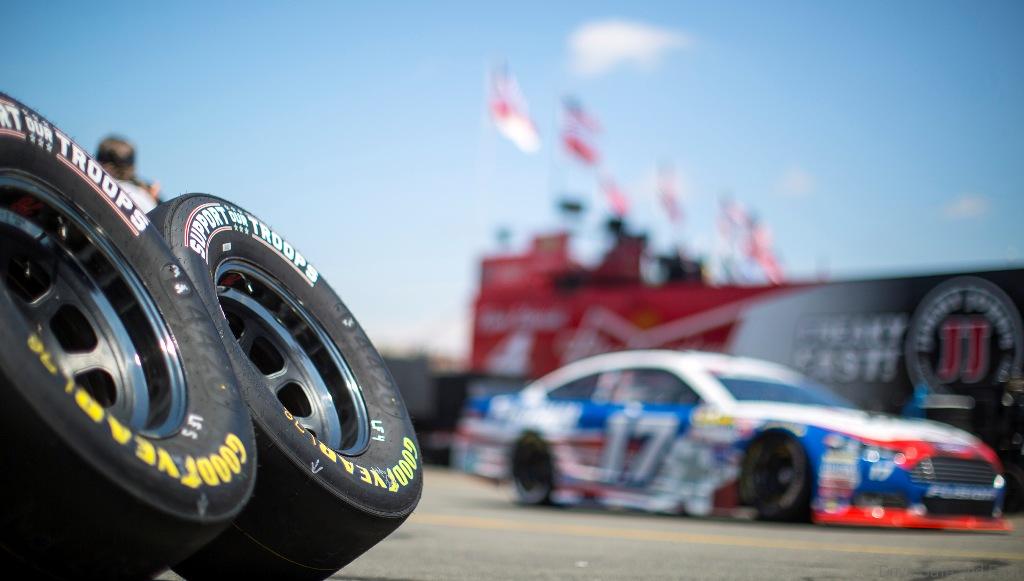
The money NASCAR is investing into tires therefore is purely on the use of the tires and not on any other aspect, all of which have to be handled by Goodyear. Some teams do get their Goodyear tires from other third-party suppliers, but this is not the standard or typical arrangement.
The total per-race cost of a NASCAR vehicle is up to $400,000 at the top end of the series. We’ve mentioned that the tires cover about $20,000 of that cost, but that clearly only forms a small portion of the overall costs. Below is a rundown of some other important costs involved in running a NASCAR vehicle and team each race:
Looking at these things, tires are neither the smallest nor the largest expense, but no one can disagree that investing in the right number of tires is a calculation that no team can afford to get wrong.
any more facts and information articles on NASCAR (and other) tires on the site. you can check out a few below.
The cost of NASCAR tires alone makes the eyes water, but as we highlighted above these are no ordinary tires. These are custom made for the car, the drivers and even the track being raced at that week. At 400 dollars a pop expensive as it is it becomes understandable for custom made tires.
The only issue is travelling at 200 Miles an Hour puts some pressure on those tires and they have to be changed at lot, that’s where the real cost mounts up, not just tin the cost per tire but the amount that can be used in a race!
References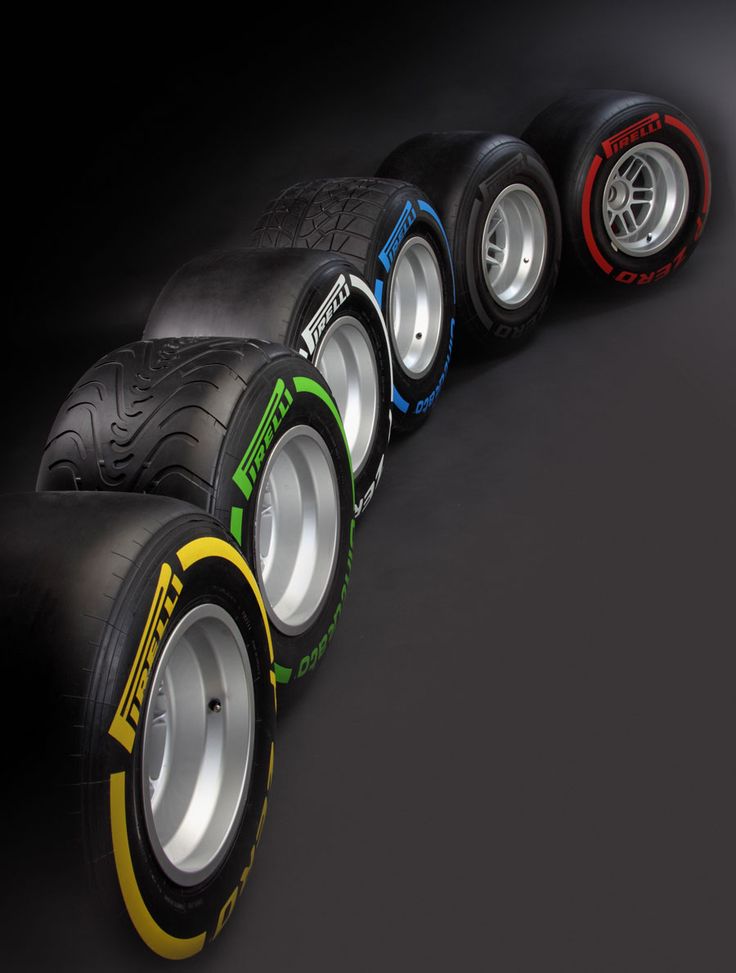
Editor's Note: You are in the new Formula 1 Main Stand blog. Exclusive interviews with former and current residents of the Formula 1 paddock are published here - you will not see such information in Russian anywhere else. Support the author with subscriptions and pluses!
The head of the Pirelli racing division, Mario Isola, spoke about working as a Milan ambulance driver, a career in a tire company and the features of tires in Formula 1.
I started when I was 18, that is 32 years ago. To work in Italy in an ambulance, you need to take courses, pass several exams.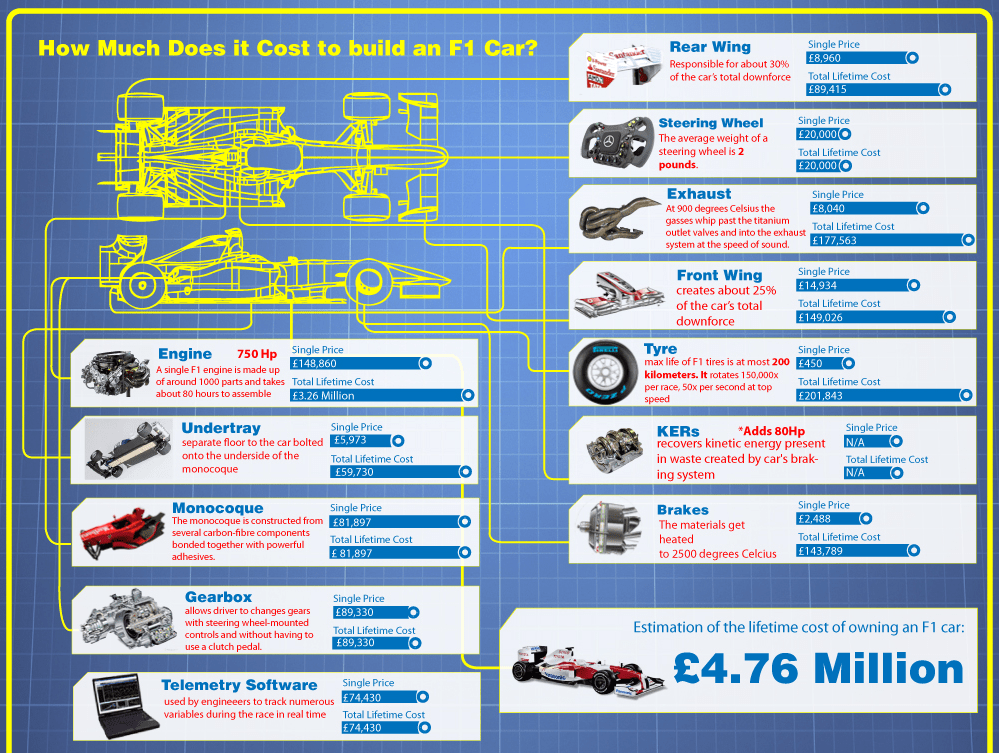 I went through all the trainings and now I work with other guys: I myself conduct trainings for ambulance drivers in Lombardy. My night shift usually starts at 7pm, on weekdays at 5am, and on weekends at 7am. There are 150 volunteers in my association. We work weekly. But now, of course, more because of the situation in Milan. I usually work once a week, sometimes a little more.
I went through all the trainings and now I work with other guys: I myself conduct trainings for ambulance drivers in Lombardy. My night shift usually starts at 7pm, on weekdays at 5am, and on weekends at 7am. There are 150 volunteers in my association. We work weekly. But now, of course, more because of the situation in Milan. I usually work once a week, sometimes a little more.
It's not about softness and hardness of rubber. This does not affect the final number of pit stops. Over the past few years, we have opted for softer tires, and the teams have moved to control the pace of the rider instead of increasing the number of pit stops in strategies. They simply ask the rider to slow down so that the tires last longer - this reduces the number of stops. Because when you go into the pits, you face the possibility of making a mistake during the pit stop.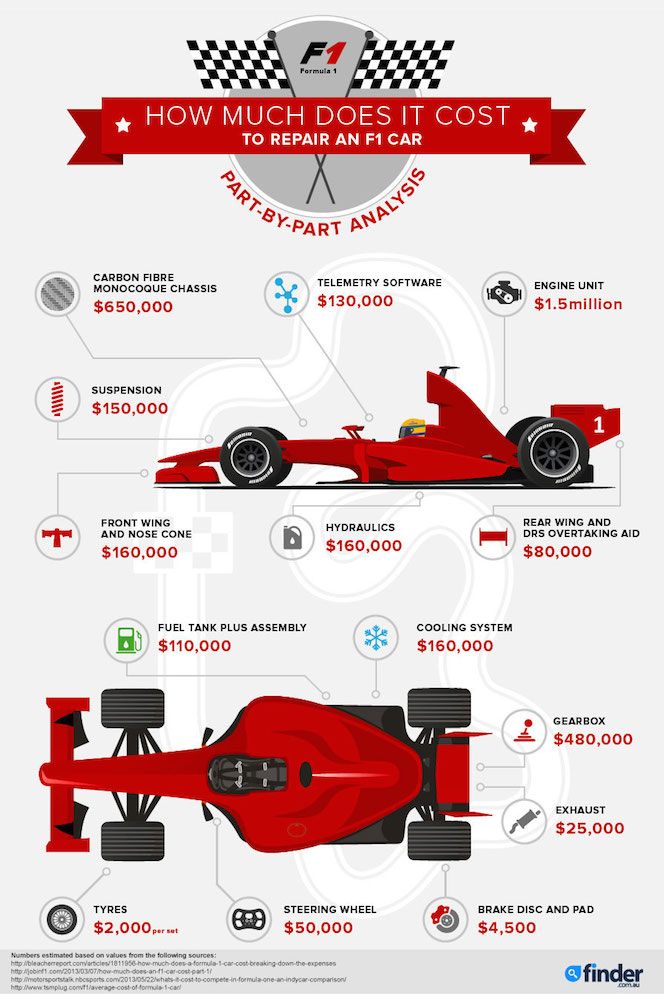 There is a risk of getting into traffic, which makes it more difficult to overtake, for example. So not only the softness of the rubber determines the number of pit stops in the race.
There is a risk of getting into traffic, which makes it more difficult to overtake, for example. So not only the softness of the rubber determines the number of pit stops in the race.
We also have to pay close attention to the softness of the tires: if you go too far, the driver will drive too slowly to stay on the strategy of one pit stop at any cost. So finding a way out of this situation is not very easy.
During pre-season testing in Barcelona, Mercedes used the DAS for many days. We analyzed all their tires, as well as the tires of the rest of the competitors, and did not find anything that would affect the rubber. Perhaps the Mercedes system reduces tire wear, but it certainly does not increase it.
Each team has one of our engineers. They cooperate with the team for two years, and then there is a rotation to avoid rapprochement.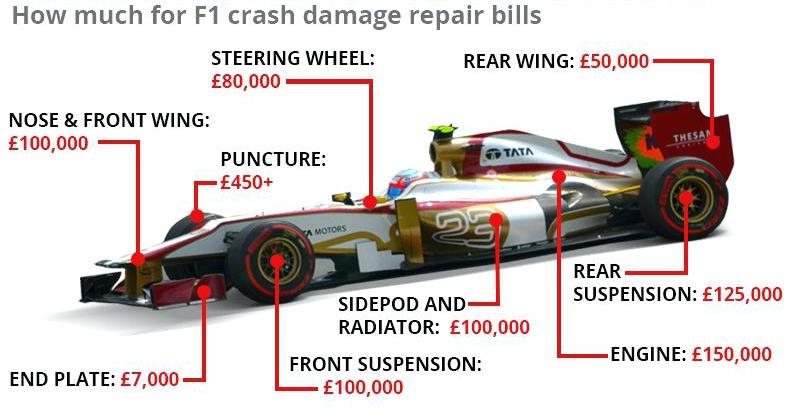 Because we have an obligation not only to provide everyone with the same product, but also the same service - and this is very important.
Because we have an obligation not only to provide everyone with the same product, but also the same service - and this is very important.
These engineers collect information about tire usage, laps, temperature and pressure. There is a whole list of data about the tires that were driven on the race weekend.
We have already begun development of 18" wheels, but their implementation has been delayed until 2022. We had the first tests in September last year with the Renault team at Paul Ricard, then we tested there with McLaren, and then with Mercedes in Abu Dhabi. This year we had only one test - in Jerez with Ferrari - but I can say that now we have a common understanding of where to start development. The main thing is the composition and profile.
After the races in Jerez, we froze the development of 18-inch wheels - we will continue next year. So far, there is no new test plan for this year due to the current situation with the virus.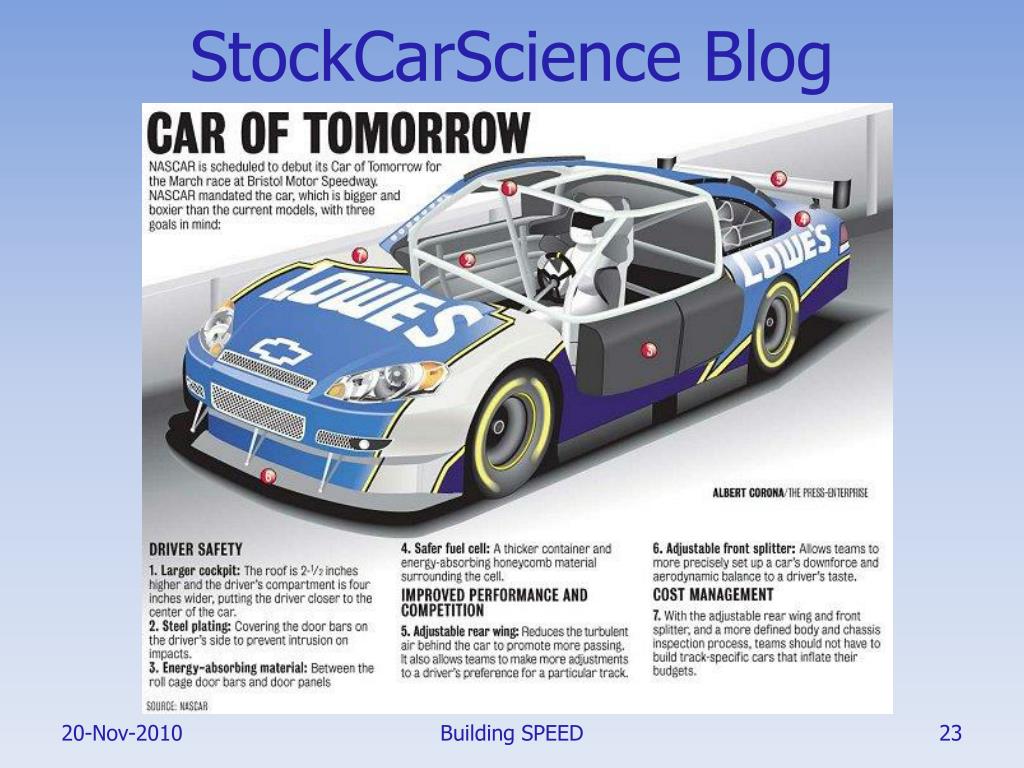
At the moment and in the next few years, Formula 1 will retain thermal covers. In them, the rear tires are heated to a temperature of about 80 degrees Celsius, and the front tires up to 100 degrees. The temperature in motion does not differ much from these values.
During the race, the temperature fluctuates between 100 and 120 degrees. And, of course, the indicators differ depending on the composition - each has its own operating temperature. It is also the window of the maximum hold, the peak of adhesion. You can often hear teams talk about working range. The window from peak to traction loss of 3 percent is very roughly 30 degrees. This is the main problem. Because in fact, the goal of teams is to stay at the peak of adhesion. Because piloting at three percent grip outside of operating temperature costs a second per lap. The window that the teams are looking for is much, much narrower than the very three percent that is taken as an example.
When you put a Formula 1 tire on a road car... The first problem is when the tire is cold the grip is very low. Second, if you can't make a tire work, it will slip, but it will live forever. The technologies that we develop for F1 are used in road tires because we study all kinds of materials a lot. We make virtual models, we study the production process.
It is clear that developments for Formula 1 are for Formula, and tires for ordinary cars are for ordinary roads. Different goals. In road cars, you think more about noise levels, about hydroplaning - there are many other elements that you don’t think about when you design F-1 tires.
If you count only the materials and the production process, then probably a few hundred euros, but less than one thousand. About something like this. But I don't include development cost here. We spend millions of euros on it - a lot of money.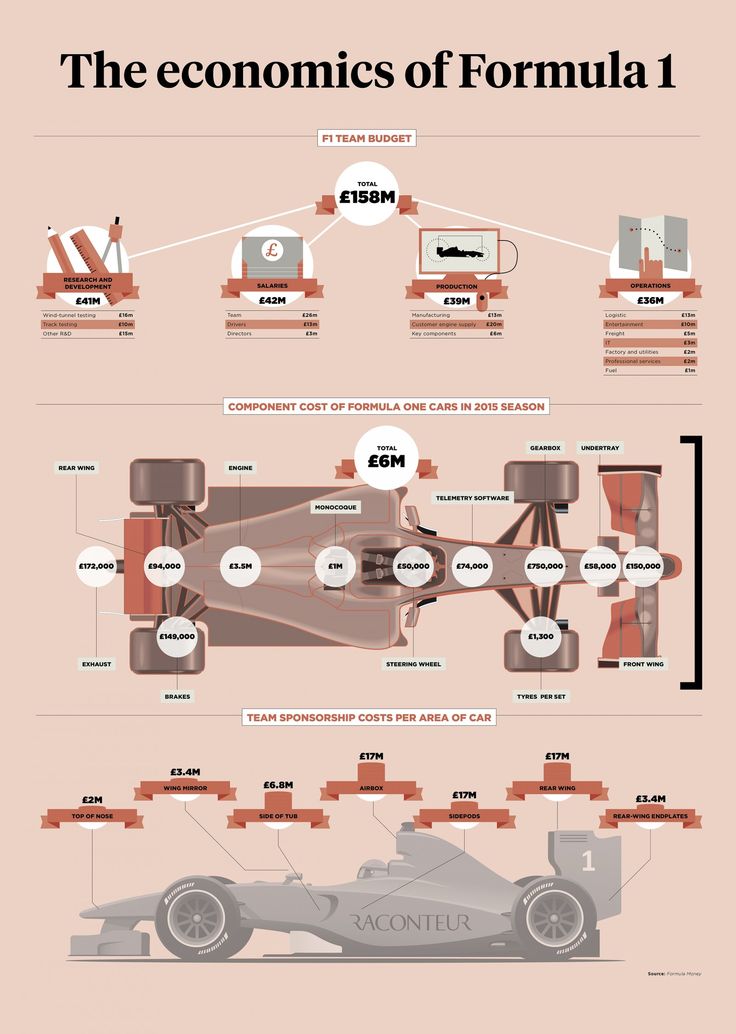 And then this cost should be included in those 50 thousand tires that we produce per year.
And then this cost should be included in those 50 thousand tires that we produce per year.
It is not our decision to choose one tire supplier. In general, this decision was made not only in Formula 1, but also in many other championships, especially ring championships, because it reduces costs for participants. Not for tire supplier. In today's era, when everyone is talking about budget cuts and cost cuts, making F1 a more accessible sport for smaller teams, allowing multiple tire manufacturers, I'm against that philosophy.
For more stories, interesting moments and details about the work of racing tires on Grand Prix cars - in the video:
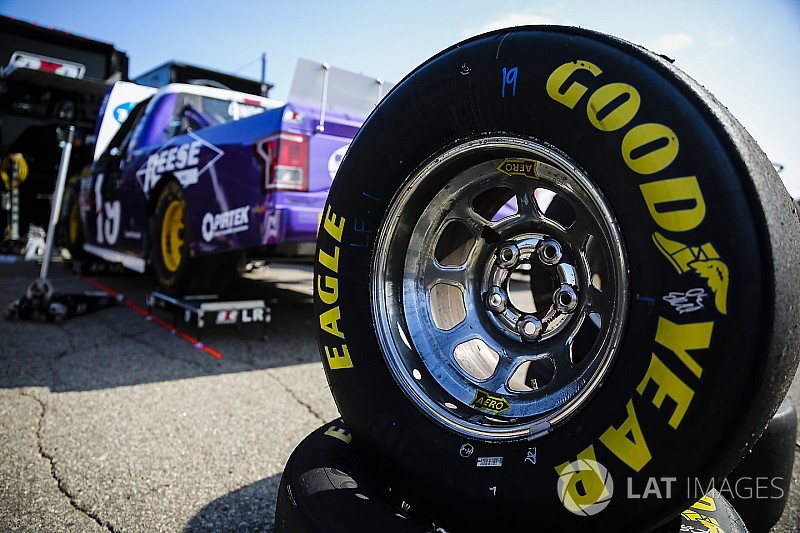 Chief Photographer of the Grand Prix - behind the scenes of the races
Chief Photographer of the Grand Prix - behind the scenes of the races Photo: formula1.com; pirelli.com; instagram.com/marioisola
New 18" tires designed from the ground up. Each element of the tire is designed from scratch, from the profile to the structure, as well as the composition of the rubber compound. The development process required over 10,000 hours of indoor bench testing, over 5,000 hours of computer simulations, and the creation of over 70 tire prototypes, developed in a virtual environment, with the goal of eventually reaching 30 different specifications, which were subsequently tested by virtually all teams over more than 20 000 kilometers. The role of the riders was decisive; each of them contributed to the development at various stages and helped Pirelli arrive at the final specifications.
DISCOVER THE FULL RANGE OF TIRES
The new tires feature a wider operating range than their 13-inch predecessors and do not adversely affect warm-up performance.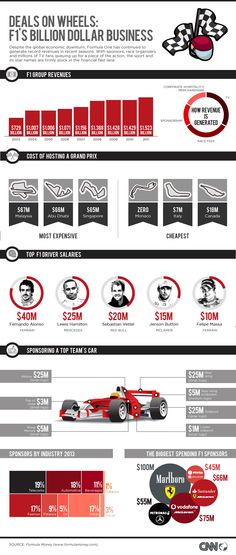 As a result, tire overheating is reduced and material degradation is reduced. There are also new temperature ranges for heating covers. Now all tires will warm up to 70 degrees, and not to 100 in front and 80 in the rear, as it was before. Reducing the temperature of the heating jackets is part of a plan to phase out the use of these jackets in the coming seasons in order to reduce energy consumption and sustainable development.
As a result, tire overheating is reduced and material degradation is reduced. There are also new temperature ranges for heating covers. Now all tires will warm up to 70 degrees, and not to 100 in front and 80 in the rear, as it was before. Reducing the temperature of the heating jackets is part of a plan to phase out the use of these jackets in the coming seasons in order to reduce energy consumption and sustainable development.
The new 18-inch tires are becoming more and more like the tires used on a daily basis by ordinary motorists. All this allows Pirelli to apply Formula 1 technology in tires for conventional cars operated on public roads.
This is the stiffest tire in the range, geared towards the trails that put the most stress on the tyres. Such tracks include Silverstone or Suzuka. The tire material is formulated to provide maximum resistance to heat and extreme loads, and is designed to last for a very long time with minimal degradation in performance.
The second option (C2) is more versatile in terms of composition hardness compared to C1. In the lineup, it is shifted towards higher stiffness, which makes it more suitable for fast, high-temperature, abrasive-coated trails. Harder compounds are sometimes recommended for new trails to provide a conservative approach when actual road conditions are not fully known.
Third option (C3) consisting of three rubber compounds. This combination is geared towards each individual race, three compounds can be used at each event and therefore the C3 is a versatile option, as it will use intermittently different compounds, hard or medium, and sometimes the softest compound of the rubber compound. With an excellent balance between performance and versatility, the C3 is well suited to a wide range of conditions.
The C4 variant is designed for efficient operation on narrow and twisty roads where a fairly quick warm-up is required to achieve instant maximum performance. This is another option that is widely used throughout the season and allows you to adapt to different tracks.
This is the softest tire in the updated range, designed for the slowest trails. They have low rates of wear and degradation where the rubber is required to provide maximum mechanical adhesion to the pavement. Typically, such tires can be found on street tracks - most often in Monaco, as well as on tracks with exceptionally smooth asphalt surfaces.
Intermediate tires are the most versatile rain tyre. They can be used on a wet track without areas of standing water, as well as on a drying surface. The tread compound is designed with a wide operating range, guaranteeing the ability to use both on slick and all-weather tires.
Dimensions:
Front: 305/720-18
Rear: 405/720-18
All Rain Tires, most effective in heavy rain as they can wick a significant amount of water out of the contact patch.